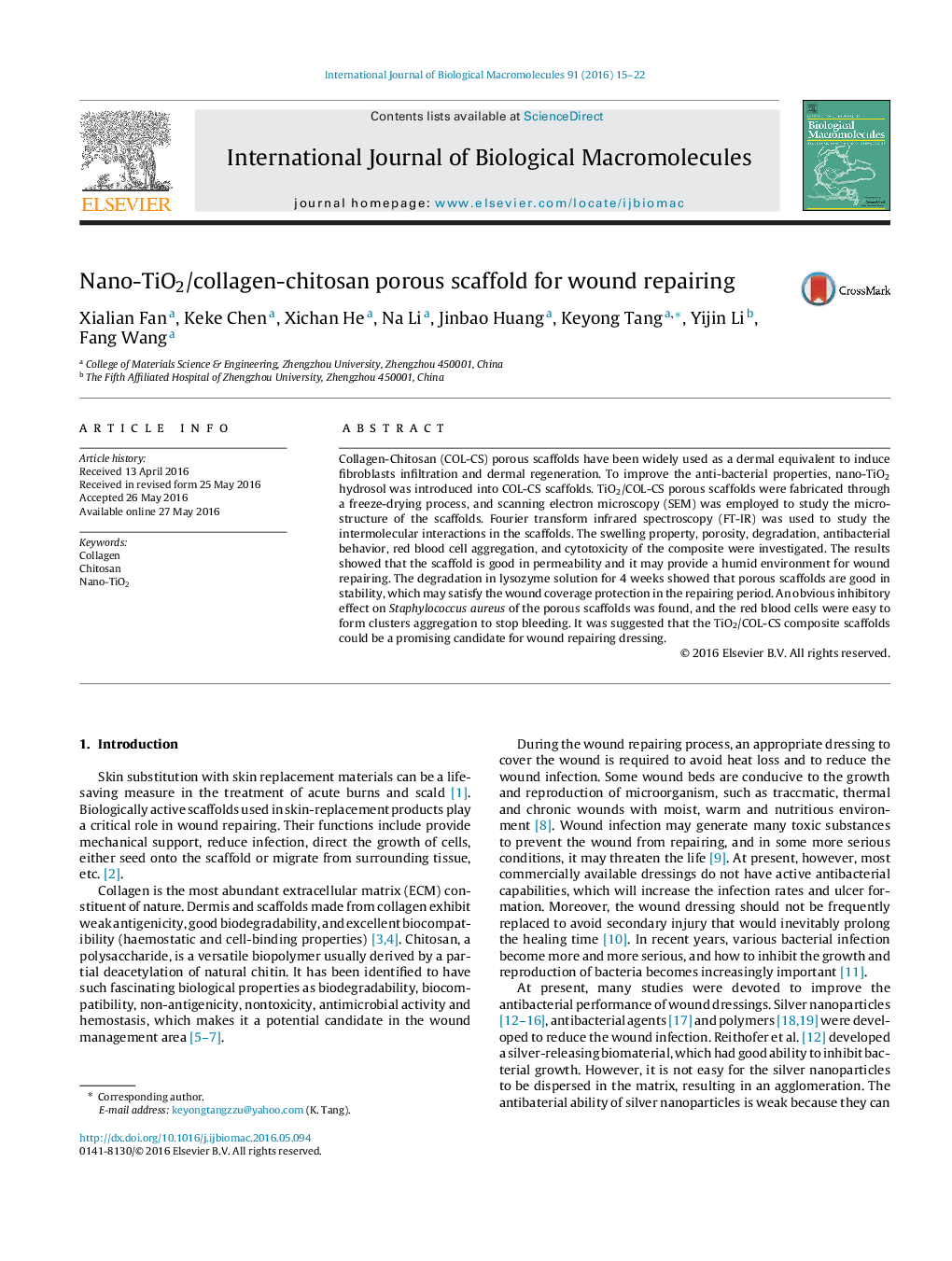| کد مقاله | کد نشریه | سال انتشار | مقاله انگلیسی | نسخه تمام متن |
|---|---|---|---|---|
| 1985598 | 1540229 | 2016 | 8 صفحه PDF | دانلود رایگان |

• A new excellent antibacterial scaffold consisting of type I collagen, chitosan and nanoparticle TiO2 in anatase form is developed.
• The addition of nano-TiO2 will form additional hydrogen bonds with collagen and chitosan, acting as a bridge between the molecular chains to increase the density of the mesh structure.
• A strong hydrogen bonding is formed in the scaffold, which plays important roles in determining the overall properties and performance.
• With the addition of TiO2, such properties of the scaffolds is improved as mechanical properties, resistance to degradation, antibaterial ability. The scaffold might provide a clean and sterile environment for wound repairing.
Collagen-Chitosan (COL-CS) porous scaffolds have been widely used as a dermal equivalent to induce fibroblasts infiltration and dermal regeneration. To improve the anti-bacterial properties, nano-TiO2 hydrosol was introduced into COL-CS scaffolds. TiO2/COL-CS porous scaffolds were fabricated through a freeze-drying process, and scanning electron microscopy (SEM) was employed to study the micro-structure of the scaffolds. Fourier transform infrared spectroscopy (FT-IR) was used to study the intermolecular interactions in the scaffolds. The swelling property, porosity, degradation, antibacterial behavior, red blood cell aggregation, and cytotoxicity of the composite were investigated. The results showed that the scaffold is good in permeability and it may provide a humid environment for wound repairing. The degradation in lysozyme solution for 4 weeks showed that porous scaffolds are good in stability, which may satisfy the wound coverage protection in the repairing period. An obvious inhibitory effect on Staphylococcus aureus of the porous scaffolds was found, and the red blood cells were easy to form clusters aggregation to stop bleeding. It was suggested that the TiO2/COL-CS composite scaffolds could be a promising candidate for wound repairing dressing.
Journal: International Journal of Biological Macromolecules - Volume 91, October 2016, Pages 15–22